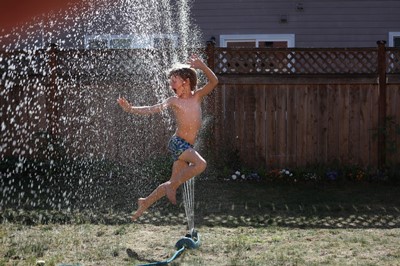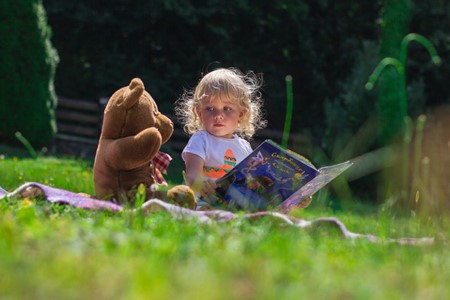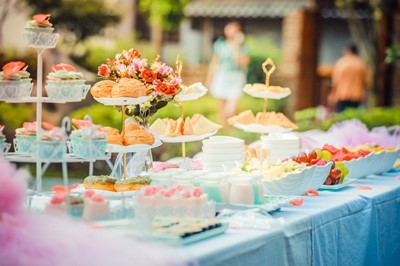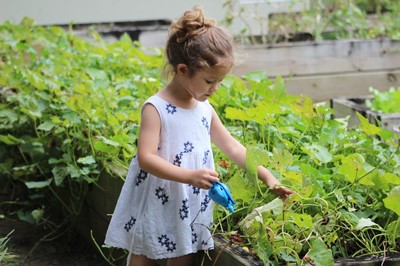Easy garden ideas for kids to keep them entertained
By Sarah Wilson, contributor at GardeningEtc.com, the home of outdoor living.

Running out of ways to keep the kids occupied?
With the school holidays following hot on the heels of the lockdown, research from Smart Energy GB reveals seven out of 10 parents are concerned that this year the summer holidays will be harder than usual and nearly half are considering new activities they haven’t tried previously.
Before you start looking at activities, remember that gardens are a magical place for children, full of adventure, exploration, and creativity. But making your garden kid-friendly and easy to maintain is no small task. Maintaining a garden where kids can play safely is key. Tools like cordless lawn mowers and robotic lawn mowers make it easier to keep your garden neat without the hassle.
No you are ready, our garden ideas for kids will give you plenty of inspiration for action-packed afternoons in the garden during the summer holidays and beyond.
- MAKE A BEE HOTEL
Bees have lost much of their natural habitat as wildflower meadows vanish. So they need a helping hand to find a safe nesting place. Building a bee hotel is a lovely way to spend a sunny afternoon and now’s the perfect time to do it. Children will love the idea of doing something to save the bees, while crafting a hotel from scratch is an activity the whole family can enjoy. Essentially it’s a box made of wood and bamboo canes hollowed out to different diameters to accommodate all bees whatever their size. There are lots to choose from online too if you decide that crafting one yourself is a step too far. However, if you wish to craft one yourself, check out cutmyplastic.co.uk for materials for your project.
Once ready, secure your bee hotel at shoulder height to a fence or wall in a sunny, sheltered spot that’s near bee friendly flowers such as lavender and enjoy the buzz.
- CREATE A GARDEN DEN
Children love to make dens in the house and creating a garden hideaway is a fun thing to do too. Don’t make it too easy for them though. Instead, encourage your children to use their imaginations to come up with ideas for how they want their den to look. String up a sturdy line or rope between the branches of adjacent trees or use bamboo canes to make a simple wigwam frame. Drape over an old sheet, throw or blanket. If you have a waterproof groundsheet from camping use this to line the inside of the den before piling on a duvet, throws and cushions to make a super snug space.
- PLAY A GAME
Board games teach children patience, learning to wait for your turn and how to win and lose gracefully. Young players will also learn how to count spaces and develop their hand-eye co-ordination. It’s a great way to spend family bonding time too.
- ORGANISE AN OUTDOOR TREASURE HUNT
Getting out in the garden can be educational. Choose a nature-themed treasure hunt and kids will learn to identify things in their natural environment. Try theming the hunt – searching for bees, bugs and butterflies, identifying leaves and flowers, or a checklist of sensory experiences such as cloud watching, smelling scented flowers, listening for birdsong and walking barefoot in the grass. Don’t make it too easy as it’s more fun if the riddle is hard to solve. The prize at the end could be a jam jar filled with coins or a bag of loot from the pound shop.

- CONSTRUCT A SUNDIAL
This activity is good for all age groups from four years up. Little ones will learn numbers while seeing them change, while older kids can learn about finding North and how we move around the sun. All you need is a sunny spot. There are lots of ways to make a sundial, including drawing round your shadow from the same point at different times during the day. But the easiest way is to buy a kit.
- DESIGN A BUTTERFLY SUNCATCHER
Encourage your children to get creative with a project that’s guaranteed to put a smile on their face. Add some magical light and pattern with a suncatcher hung from the branches of a tree or pergola. Also known as rainbow makers, when they catch the sunlight colourful patterns will dance and flicker around the garden.
- WATCH AN OUTDOOR MOVIE
When it comes to special moments nothing beats snuggling up together for a family film night. Moving it outside to the garden on a balmy evening will turn the experience into something they’ll remember. Easy to set up, all you need is a white sheet thrown over a washing line and a projector. Alternatively take your TV outside but set it up carefully and be mindful of cables. Set the scene with lots of magical lighting. Multicoloured festoon lights adds a special touch that children will love. Dot around some lanterns too for a fairytale vibe, then pile up the blankets and throws. And don’t forget the popcorn!

- THROW A TEA PARTY
One of the easiest ways to keep kids amused for hours is to set up an imaginative play scenario in the garden. Tea parties and picnics are always popular, especially if you invite the teddy bears too. Throw down a picnic rug then add a few key accessories to get the party started. Giving it a birthday theme will go down well, especially if you add the right props.
- CAMP OUT IN THE GARDEN
If you never know where the tent pegs are and even if you find them it’s a palaver putting the tent up, think about a more permanent structure for kids to camp out. A wooden teepee makes a great hideaway (they come with a fabric door to keep parents out) and you can find a space for it that doesn’t leave a big patch of dead grass on the lawn. Add duvets, throws, a few cushions, and an airbed if you want to take things up to the next level.
- BUILD A BIRD FEEDER
Attract more birds to your patch with a simple building project kids will love. Bird feeders should be placed in a quiet and sheltered spot but they can also be attached to a window with suction pads. Seeing them feed up close becomes a more personal experience for children. The RSPB recommend seeds, suet and peanuts for blue tits and sunflower hearts for finches.
12. ACCESSORISE
Accessorising the garden can add a lot of character and fun for kids. Consider adding colourful pots, whimsical wind chimes, or even a small birdbath to attract wildlife. For high-quality, beautifully designed garden accessories that can enhance your child's outdoor experience, go to hpotter.com to check out the unique offerings. These elements can make the garden more engaging and enjoyable for children.
- GET GROWING
It’s not too late to plant seeds and still get a bumper crop this summer. Herbs such as mint (add to homemade lemonade) and basil (for homemade pizza) are super easy to grow. If children want to try flowers, a pack of forget me not seeds is a good starter. They can be grown throughout summer and into September. It will soon be time to plant spring bulbs too, which helps them learn about the growing seasons.

- TRY ZORBING
A fun pastime children of all ages will love, you don’t need a slope for zorbing as it works on a flat lawn too. They work on water too if you’re planning any summer pool parties. Made of environmentally friendly high quality and extra tough PVC, it’s guaranteed to see a lot of action.
- BUILD A BUG SANCTUARY
Choose a dark corner of the garden to build a haven with lots of nooks and crannies for insects to hide in. Help your children look for twigs, leaves, moss and bark. If you have any broken terracotta pots, bricks, old roof tiles or logs add them to the mix to provide plenty of cool damp places for bugs to hide in. Check out local skips for old pallets too, as these make an ideal base for building up layers.
If you want something a little more swish and you’re handy with a drill use wood to create a set of hollow interconnecting shapes you can then fill. Build up layers of wood, bricks and logs, pushing moss and leaves into holes and spaces to create retreats. A cordless drill is ideal for drilling tunnels into logs.
- PRESS FLOWERS FOR CRAFT PROJECTS
Now is the perfect time to encourage children to find flowers in the garden that can be kept and used later for decorative art and craft projects such as cards, journals and framed pictures. Make sure they pick the flowers on a dry day after the morning dew has evaporated as the blooms need to be dry. You can get good results from common garden flowers such as roses and daisies. Trim off any stamens to avoid the petals getting stained and keep some leaves on the stem for a more natural look. The flowers should then be arranged between two sheets of non-stick baking paper. Alternatively a neat trick is to slip flowers inside coffee filter papers. Always make sure the flowers and foliage don’t overlap when arranging them. Insert into a large book and pile more books on top to add weight. In two weeks your flowers should be ready.